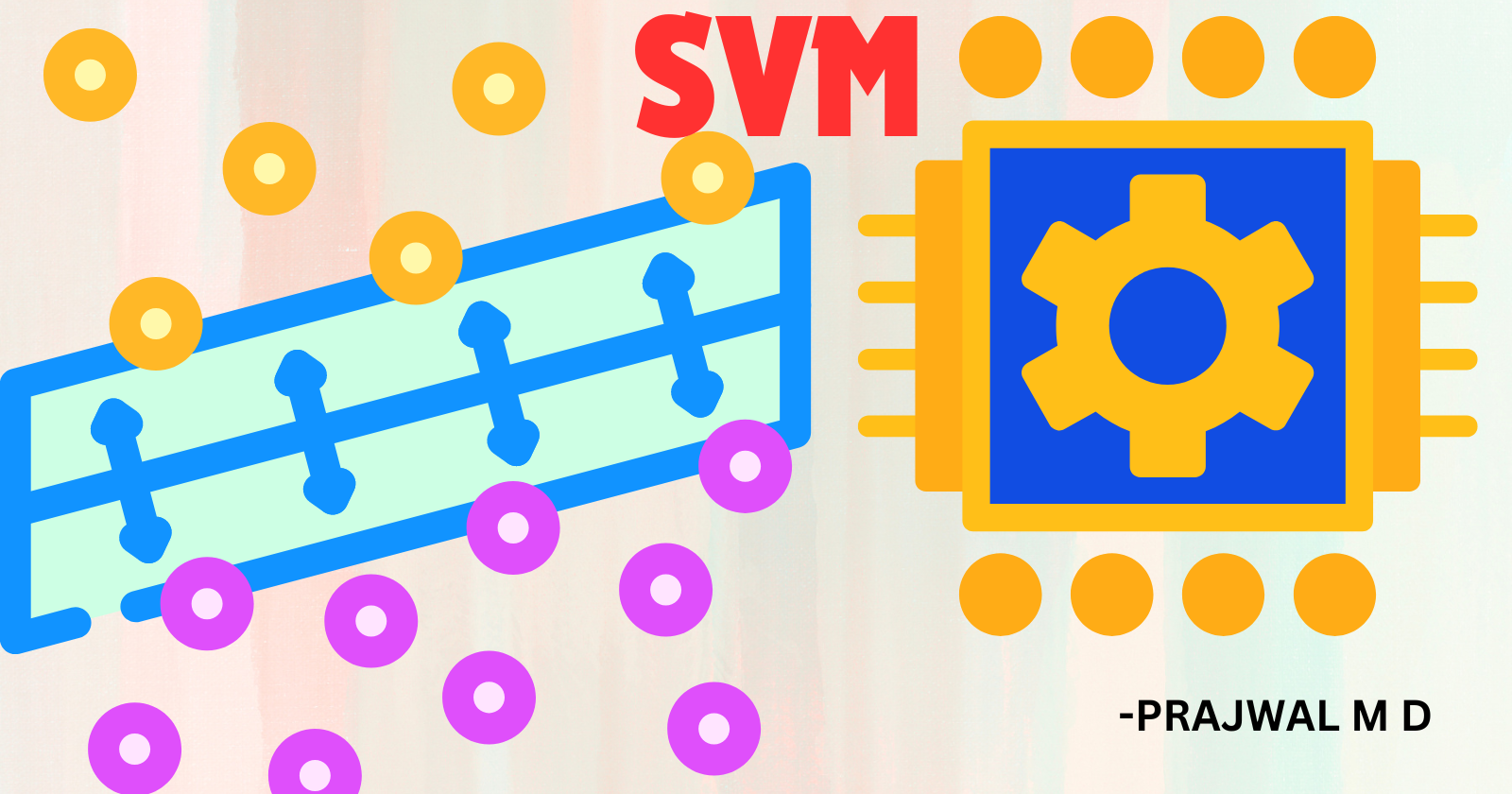Understanding Support Vector Machines: A Guide for Beginners
 Prajwal M D
Prajwal M D
In the ever-evolving world of machine learning, Support Vector Machines (SVM) stand out as one of the most robust and widely-used algorithms. Whether you’re a data science enthusiast, a machine learning practitioner, or someone curious about the mechanisms behind these technologies, understanding SVMs can provide valuable insights into how machines learn to classify and predict.
What is a Support Vector Machine?
Support Vector Machine is a supervised learning algorithm used primarily for classification tasks, although it can be adapted for regression. At its core, SVM aims to find the optimal hyperplane that best separates the data points of different classes in a high-dimensional space.
The Concept of Hyperplanes and Margins
In SVM, a hyperplane is a decision boundary that separates different classes of data points. In a 2D space, this would be a line; in 3D, it would be a plane, and so on. The goal of SVM is to identify the hyperplane that maximizes the margin between the closest points of the classes, known as support vectors.
The margin is the distance between the hyperplane and the nearest data point from either class. A larger margin is desirable as it suggests a more robust model with better generalization to unseen data.
How SVM Works
Data Transformation: Initially, data may not be linearly separable in its original feature space. SVM uses a technique called the kernel trick to transform the data into a higher-dimensional space where a hyperplane can effectively separate the classes.
Finding the Hyperplane: SVM optimizes the hyperplane by maximizing the margin. This involves solving a quadratic programming problem that identifies the support vectors and the optimal hyperplane.
Kernel Functions: Kernels are mathematical functions used to transform the data. Popular kernels include:
Linear Kernel: Used for linearly separable data.
Polynomial Kernel: Useful for polynomially separable data.
Radial Basis Function (RBF) Kernel: Also known as the Gaussian kernel, it’s effective for non-linear data.
Example Dataset: Iris Flower Classification
To illustrate how SVM works, let's use a well-known example: the Iris dataset. This dataset contains 150 samples of iris flowers, each described by four features: sepal length, sepal width, petal length, and petal width. The goal is to classify the flowers into three species: Setosa, Versicolor, and Virginica.
Here’s a quick overview of the steps involved:
- Loading the Dataset:
pythonCopy codefrom sklearn.datasets import load_iris
import pandas as pd
iris = load_iris()
df = pd.DataFrame(data=iris.data, columns=iris.feature_names)
df['species'] = iris.target
- Visualizing the Data:
pythonCopy codeimport seaborn as sns
import matplotlib.pyplot as plt
sns.pairplot(df, hue='species')
plt.show()
- Training an SVM Model:
pythonCopy codefrom sklearn.model_selection import train_test_split
from sklearn.svm import SVC
from sklearn.metrics import classification_report, accuracy_score
X = df.drop('species', axis=1)
y = df['species']
X_train, X_test, y_train, y_test = train_test_split(X, y, test_size=0.2, random_state=42)
svm_model = SVC(kernel='linear')
svm_model.fit(X_train, y_train)
- Evaluating the Model:
pythonCopy codey_pred = svm_model.predict(X_test)
print(classification_report(y_test, y_pred))
print('Accuracy:', accuracy_score(y_test, y_pred))
Advantages of SVM
Effective in High-Dimensional Spaces: SVM works well with large feature sets, making it suitable for applications like text classification and bioinformatics.
Robustness to Overfitting: By focusing on the support vectors and maximizing the margin, SVM is less prone to overfitting, especially in high-dimensional spaces.
Versatility with Kernels: The ability to use different kernel functions makes SVM adaptable to various types of data and complex relationships between features.
Disadvantages of SVM
Computational Complexity: Training an SVM can be computationally intensive, especially with large datasets.
Choice of Kernel and Parameters: Selecting the appropriate kernel and tuning hyperparameters (like C, the regularization parameter, and the kernel parameters) requires careful experimentation and cross-validation.
Interpretability: SVM models, particularly with non-linear kernels, can be less interpretable compared to simpler models like logistic regression.
Applications of SVM
SVMs have found applications in various domains due to their effectiveness and versatility:
Text and Hypertext Categorization: SVMs excel in text classification tasks, such as spam detection, sentiment analysis, and document categorization.
Image Classification: With the ability to handle high-dimensional data, SVMs are used in image recognition and classification tasks.
Bioinformatics: SVMs are employed for protein classification, gene expression analysis, and other biological data classification tasks.
Handwriting Recognition: SVMs are used to classify handwritten digits and letters, enhancing optical character recognition (OCR) systems.
Conclusion
Support Vector Machines are a powerful tool in the machine learning toolkit, offering robust performance for both linear and non-linear classification problems. While they come with their own set of challenges, their advantages make them a go-to choice for many classification tasks. Understanding the fundamentals of SVM and its applications can open the door to more advanced machine learning concepts and techniques, empowering you to build better predictive models.
Subscribe to my newsletter
Read articles from Prajwal M D directly inside your inbox. Subscribe to the newsletter, and don't miss out.
Written by

Prajwal M D
Prajwal M D
I'm a innovative individual, fervently converting complex challenges into elegantly simple and intuitively seamless designs and developments, skillfully amalgamating Data Analytics and Machine Learning Algorithms".